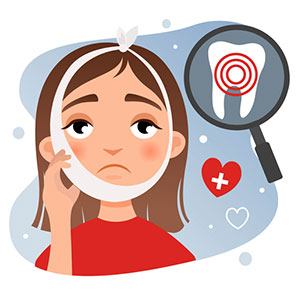Parents love watching their kids grow up, from those early wobbly steps to their first solo car drive. Of course, you can expect a few mishaps along the way, most of which won’t leave them worse for wear. But some risks are just too hazardous to ignore—including the potential for dental injuries.
Each year, one in ten children suffers a traumatic dental injury, many of which require extensive treatment. That’s why during National Child Safety and Prevention Month in November, we’re highlighting areas of risk for pediatric dental injuries and how you can prevent them.
That risk changes depending on a child’s stage of development. Teething infants, for example, relieve gum pressure by gnawing on things. Make sure, then, that you have items for teething made of cloth or soft plastic, and keep harder items that could damage their gums and emerging teeth out of reach.
Toddlers learning to walk encounter numerous injury opportunities, like a fall that lands them face first on a hard surface. You can reduce this risk by moving tables and other hard furniture out of your child’s travel paths, covering sharp edges with padding, or simply isolating your child from home areas with hard furniture.
Pay attention also during bath time. Wet porcelain is notoriously slippery even for adults, and possibly more so for a child. A sudden slip in the bathtub could cause a mouth injury, so encourage your child not to stand until it’s time to get out.
School-aged children face another set of perils to their mouths from outside play. At this stage, your best preventive measure is to teach them to observe play safety: Make sure they know not to aim balls, frisbees, or other play items at others’ heads and to be on the lookout for the same. You’ll also want them to be safety-minded while playing on swings, monkey bars or other playground equipment.
If your older kids take an interest in sports, particularly the contact variety, you’ll want to protect them with an athletic mouthguard (and encourage them to wear it during both practice and regular games). You can purchase a mouthguard at any retail or sporting goods store, but the most protective and comfortable to wear are custom-made by a dentist. Although more expensive, they’ll still cost less than treatment for a traumatic dental injury.
Childhood’s wonderful adventure has risks, and some are more serious than others. Following these prevention tips can help your child avoid a dental injury that could rob them of a healthy mouth.
If you would like more information about childhood dental concerns, please contact us or schedule a consultation. To learn more, read the Dear Doctor magazine articles “Dentistry and Oral Health for Children” and “An Introduction to Sports Injuries & Dentistry.”

